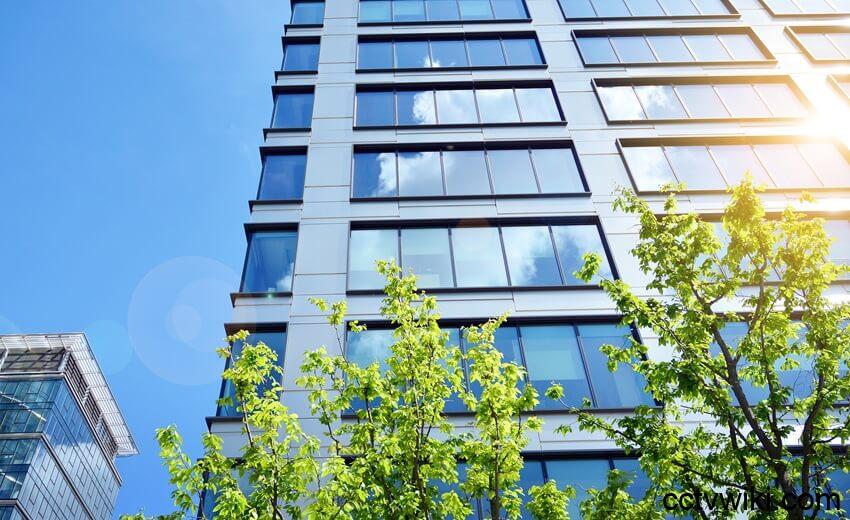Green Buildings Embrace Security as a Sustainability Ally
Green buildings are no longer a futuristic concept; they’re a global imperative. As the world increasingly prioritizes sustainability, security systems are emerging as key players in making buildings not just safer, but also more environmentally friendly.
The benefits of green buildings are well-documented. Compared to their conventional counterparts, LEED-certified buildings boast a 34 percent reduction in CO2 emissions, a 25 percent cut in energy consumption, and an 11 percent decrease in water usage. This eco-friendly trend is gaining serious momentum, with the global green building market projected to surge from US$516.66 billion in 2023 to a staggering $1.37 trillion by 2034, fueled by an impressive 9.42 percent compound annual growth rate.
So, how can security systems contribute to this green revolution? According to Patrick Lim, Group Strategy Director at Ademco Security Group, “Modern security systems with advanced sensors have become a surprise go-to backup for green building initiatives for as long as a decade. Most green building systems are expensive to upgrade and replace and can be stagnant in technologies. Security sensors became the natural and dependable data gatherer for more dynamic environments.”
James Clark, Director of Sales for EMEA and APAC at AMAG Technology, echoes this sentiment. “Green buildings rely on automation and the effective use of data. IoT-enabled security devices communicate in real-time with building automation platforms and support the use of predictive maintenance, thereby reducing waste and extending equipment lifespan,” he explains. “Modern security systems aren’t just about keeping buildings safe; they are part of a holistic ecosystem that helps buildings use energy wisely, reduce waste, and create healthier, more sustainable environments.”
Ways security systems can boost building sustainability
Here are some of the key ways modern security systems are contributing to building sustainability:
Secure and sustainable by design
The principles of “crime prevention through environmental design (CPTED)” can be a game-changer when incorporated during the building design phase. By proactively addressing security concerns, the need for excessive security equipment can be minimized, boosting overall sustainability.
Edison Chen, Service Head of Smart Buildings, Smart Infrastructure at Siemens Taiwan, explains, “If security systems are designed and planned according to CPTED principles, such as enhancing visibility to eliminate blind spots, using landscape and architectural design to guide traffic flow, reducing unnecessary entry/exit points, and implementing continuous improvement plans, this preventive design approach will not only reduce criminal motivation but also minimize the number of security devices and system scale required, thereby reducing the overall energy consumption of the security system. This creates a sustainable secure environment.”
Environmental product features
Security product manufacturers are increasingly embracing eco-friendly designs and features. Clark notes, “We provide low-power readers and controllers and consolidate device power on efficient PoE switches to conserve energy. On the video side, we minimize bandwidth and storage by using dynamic resolution scaling in our Symmetry CompleteView Video Management System, which serves the right stream for each device.”
Lim adds, “Advanced security systems now focus on digital credentials which dramatically reduce the use of plastic cards, tokens, and printed visitor badges. This not only reduces the risk of static token duplications but also provides convenience while being environmentally friendly.”
Even physical ID cards are getting a green makeover. “In the ID card sector, manufacturers have begun replacing traditional PVC cards with biodegradable alternatives such as PLA (Polylactic Acid) derived from non-food corn sources or bamboo-based materials,” says Chen.
Security-building management integration
The integration of security systems with building management systems (BMS) can lead to significant reductions in energy consumption and carbon footprint.
According to Sarah Rodrigues, Chief Product Officer at Acre Security, “Integrating security with building management unlocks actionable insights that drive sustainability. By connecting access control and visitor management with building systems, organizations can use the wealth of data from connected systems to understand how spaces are used throughout the day. These insights help facility teams identify which areas are busiest and which stay mostly empty, allowing them to fine-tune lighting, heating, and cooling. This reduces energy waste without compromising comfort or safety.”
We’ll delve deeper into the benefits of security-BMS integration in an upcoming article.

